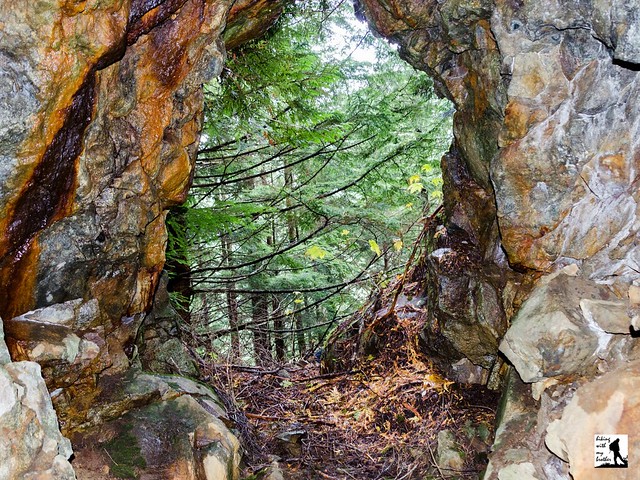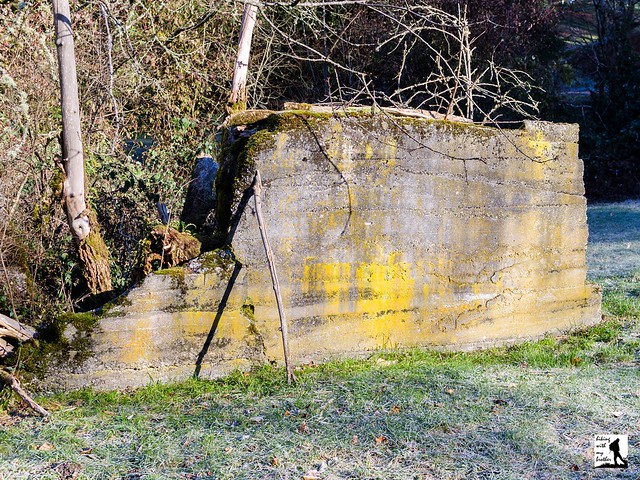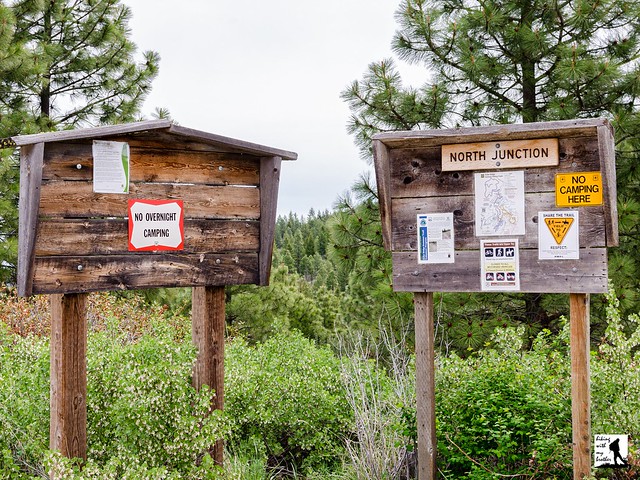Total Ascent: 2000ft
Highest Point: 2800ft
Total Distance: 5.6 miles
Location: N 47° 28.253, W 121° 37.702
Required Permit: None
Difficulty: Hard (due to route finding)
 Please note that Middle Fork Road is in the process of being paved. It may be that access to this trail is limited during construction.
Please note that Middle Fork Road is in the process of being paved. It may be that access to this trail is limited during construction.A few weeks ago we decided to head back to the Middle Fork Snoqualmie Area to do a little more exploring. After doing a bit of research we found a few references to a copper mine that had been carved into the slopes of Mailbox Peak above Granite Creek near the Granite Lake Trail. We’ve made the hike out to Granite Lakes in the past, so we decided to try an alternative approach for this trek up to the seldom visited Horseshoe Mine.
 The Horse Shoe Mining Company was established in Seattle in 1904 and eventually held 11 claims covering 220 acres of land in the Middle Fork Snoqualmie and Pratt River Valleys. The company joined other mining operations already working along Quartz Creek and in the Dutch Miller area. One of the company’s first claims was known as “Horse Shoe” and was centered around a four-foot wide vein of bornite ore. From this vein, now known as the Horseshoe Mine, miners used hand drills to follow the bornite a few hundred feet into Mailbox Peak. The bornite was then hauled out of the river valley to be smelted down for its copper. Sometime before 1909 the bornite ran out and the company abandoned the claim. Today, the remains of the mine slumber in the forests above Granite Creek.
The Horse Shoe Mining Company was established in Seattle in 1904 and eventually held 11 claims covering 220 acres of land in the Middle Fork Snoqualmie and Pratt River Valleys. The company joined other mining operations already working along Quartz Creek and in the Dutch Miller area. One of the company’s first claims was known as “Horse Shoe” and was centered around a four-foot wide vein of bornite ore. From this vein, now known as the Horseshoe Mine, miners used hand drills to follow the bornite a few hundred feet into Mailbox Peak. The bornite was then hauled out of the river valley to be smelted down for its copper. Sometime before 1909 the bornite ran out and the company abandoned the claim. Today, the remains of the mine slumber in the forests above Granite Creek.The trail begins directly off the Middle Fork Road, following the remains of an old logging road into a young forest of alder and hemlock. The road is currently marked by a large notice indicating a trailhead, parking area and restroom will be built here soon, making it likely that this approach will be developed in the near future. Continue following the road for .6 miles to a well-marked bootpath leading up and into the trees on your left. From here the thin trail is a little rough, but easy to follow as it works its way up the mountainside. Keep an eye out for the mossy stumps with springboard notches cut into them, a lasting reminder of the area’s timber history.
After a half-mile of climbing through encroaching underbrush the path connects with the Granite Lakes Trail. Head left and continue to climb alongside the sound of Granite Creek to the 2.3 mile mark. Look for a slight dip in the trail indicating an overgrown forest road that once provided easy access across the creek. The trail is otherwise unmarked and it will require a little bushwhacking to find a way across. The barely recognizable remains of the bridge that once spanned the creek are still here and can be used, though nearby rocks and logs may prove easier to navigate. Once on the other side the wide roadbed is easy to find and is marked by the rusting remains of a 1941 Chevrolet Special Deluxe Coupe.
Continue following the road as it begins its gentle climb toward the mine. Find a trail leading steeply up the hillside in about a third of a mile, though the road continues on for a few hundred feet. The path is a helpful start, but it soon disappears leaving you with few hints as to the location of the mine. From here, traverse the mountainside in the same direction as the road bed below, continuing to climb upward. Within .1 mile you should reach what remains of a rough road, which eventually leads to the mine. Note that there are few discernible landmarks in this area and it took us quite a while to find the mine without GPS data. If at all possible, bring along a GPS with our tracks as it will make it much easier to reach your destination.
We don’t recommend this hike for everyone, as some route finding skills are required to find your way to the mine. However, if you’re comfortable with a little adventure, this is a fun alternative to the Mailbox Peak crowds. If you’re looking for a longer hike, you can get some more mileage by starting from the Granite Lakes Trailhead rather than the shortcut we recommend here. As always, use caution around the mine as it could be unstable.
 To get there, take I-90 to exit 34 and take a left onto 468th Ave. Follow the road past the truck stop for about a half-mile until you reach SE Middle Fork Road, also known as Forest Road 56. Turn right and follow the road for a few twists and turns, keeping left when the road splits. After 2.2 miles reach SE Dorothy Lake Road. Turn left and continue 2.9 miles to a pullout on the right side of the road just before the bridge crossing the Middle Fork Snoqualmie. Park here and walk a few hundred feet down to the abandoned road to begin the trail. -Nathan
To get there, take I-90 to exit 34 and take a left onto 468th Ave. Follow the road past the truck stop for about a half-mile until you reach SE Middle Fork Road, also known as Forest Road 56. Turn right and follow the road for a few twists and turns, keeping left when the road splits. After 2.2 miles reach SE Dorothy Lake Road. Turn left and continue 2.9 miles to a pullout on the right side of the road just before the bridge crossing the Middle Fork Snoqualmie. Park here and walk a few hundred feet down to the abandoned road to begin the trail. -NathanPrint Google Directions >>








